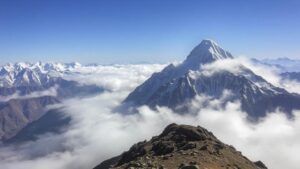Decoding ancient star maps believed to point to uncharted city ruins.
Decoding Ancient Star Maps: A Guide to Uncharted City Ruins
Throughout history, humanity has looked to the stars for guidance, inspiration, and navigation. Among the many wonders found in ancient cultures are star maps that some believe indicate the locations of uncharted city ruins. These celestial guides offer more than mere navigation; they are intricate pieces of history that could lead to significant archaeological discoveries. This article delves into the process of decoding these maps and what they may signify.
The Historical Context of Star Maps
Star maps have existed in various forms for millennia, utilized by numerous civilizations, including the Babylonians, Greeks, and Native American tribes. The Babylonians, for instance, had an intricate understanding of the night sky, using their observations to create star catalogs around 1300 BCE. Similarly, the Polynesians were skilled navigators, utilizing star alignments to travel vast ocean distances.
These ancient navigators often inscribed their celestial knowledge onto stone or parchment, creating star maps that served both practical and spiritual purposes. Many anthropologists believe that these maps could also point towards significant locations on Earth, including long-lost cities.
Decoding the Star Maps: Techniques and Technologies
Decoding ancient star maps involves a multidisciplinary approach combining history, astronomy, and modern technology. Researchers typically follow these steps:
- Historical Research: Understanding the cultural context around when the map was created. For example, star maps from the Mayan civilization intricately connect with their architectural designs and agricultural practices.
- Astronomical Analysis: Astronomers chart the positions of stars at different historical epochs. This analysis helps in pinpointing timeframes in which the maps were used.
- Geographic Correlation: Researchers match the astronomical positions with geographical features on Earth, using GPS and GIS (Geographic Information Systems) technology to narrow down potential locations.
In recent years, advanced imaging technology such as LiDAR (Light Detection and Ranging) has been instrumental. For example, in 2018, LiDAR was used to uncover over 60,000 hidden structures in the jungles of Guatemala, previously obscured by dense foliage, many of which correlated with astronomical positions noted in Mayan star maps.
Real-World Applications: Discoveries from Decoded Maps
Several intriguing discoveries have surfaced from the study of ancient star maps. One notable case is that of the lost city of Atlantis, referenced in Platos dialogues. While its existence remains debated, some scholars have attempted to connect certain star maps with possible locations in the Mediterranean.
Another significant find relates to the star maps of the Inca civilization. Researchers have hypothesized that the Inca used the Milky Way as a roadmap for their extensive road system, leading to sites like Machu Picchu. As researchers decode these ancient charts, they reveal a network of roads and significant ruins shaped by celestial events.
Potential Challenges in Decoding
Although the pursuit of decoding ancient star maps is thrilling, it is not without its challenges. Some of the hurdles include:
- Loss of Context: Many ancient maps have been damaged or lost, leading to incomplete information.
- Interpretation Variance: Different scholars may interpret symbols and alignments differently, leading to conflicting theories.
- Technological Limitations: Although technology has advanced significantly, there are still limitations in accurately reading ancient inscriptions or correlating them with modern geography.
Actionable Takeaways for Enthusiasts
For those interested in the topic, consider these steps:
- Research Local History: Study local ancient cultures and their astronomical practices; this knowledge can provide context to any findings.
- Engage with Technology: Familiarize yourself with GIS and LiDAR technologies through online courses or local workshops to appreciate how modern approaches can uncover ancient mysteries.
- Participate in Archaeological Initiatives: Join local archaeological digs or societies to gain firsthand experience and understanding.
Conclusion
The process of decoding ancient star maps is both a challenge and an adventure. Each map carries with it a story–one of human endeavor, celestial navigation, and the enduring quest for knowledge. As researchers continue to unveil the secrets behind these ancient celestial charts, we may be one step closer to discovering the ruins of lost cities and understanding the civilizations that once thrived under the stars.


